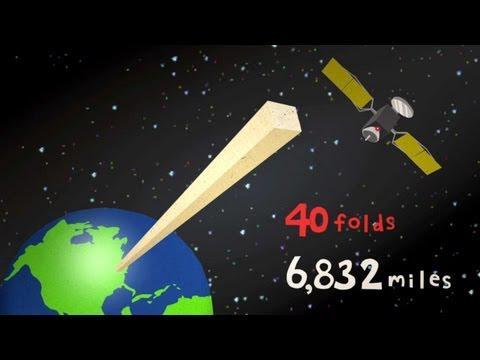Scrunch time: The peculiar physics of crumpled paper
Geege Schuman stashed this in Science Too
Stashed in: Science!, Paper!, Plants!, MythBusters
This is tensile strength. It also manifests when you fold paper and thereby impart tension at the resulting crease. Like these creases, the ridges inside the paper ball hold the energy you imparted by folding the paper. They are also the reason that a paper ball cannot be compressed beyond around 90 per cent air without superhuman effort. Through a combination of the rigidity of the ridges and the energy they concentrate, they prop up the structure as well as any deliberate design.
This wasn't an entirely unexpected finding, but the second thing the 3D images revealed was. You might imagine ridges would arrange themselves randomly inside the balls, but the reality is very different. Weirdly, the interior of the ball was a series of orderly layers.
From the article: There is something of a niche research field in paper folding. One of its original defining experiments was testing the assertion that it is only possible to fold a sheet of paper seven times. This was shown to be false on the Discovery Channel programme Mythbusters (episode 72, first aired in 2007). The actual number turned out to be 11, though getting to that required a steamroller and a very thin grade of paper akin to parachute material. The dimensions of the folding material were also on a huge scale - the size of a football pitch. In the context of the office, however, the seven folds assertion stands, unbusted.














3:04 PM Apr 22 2013